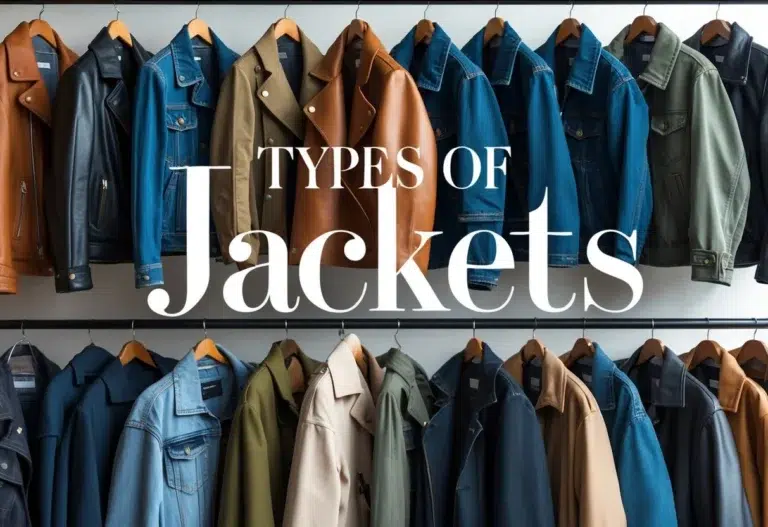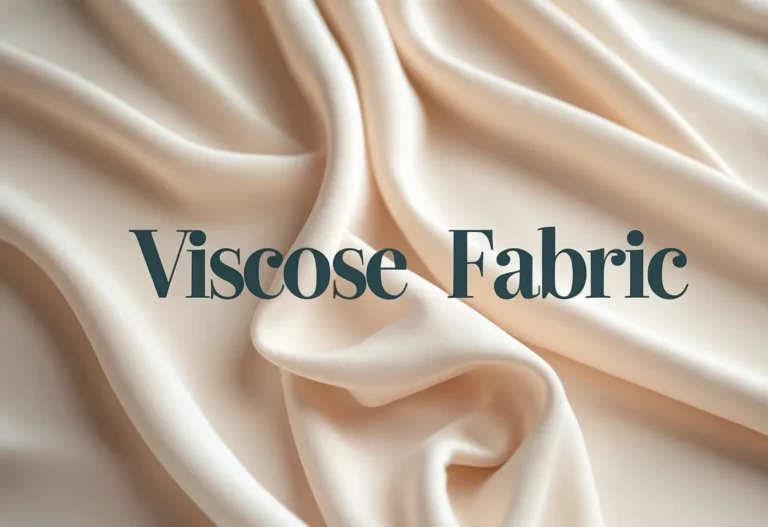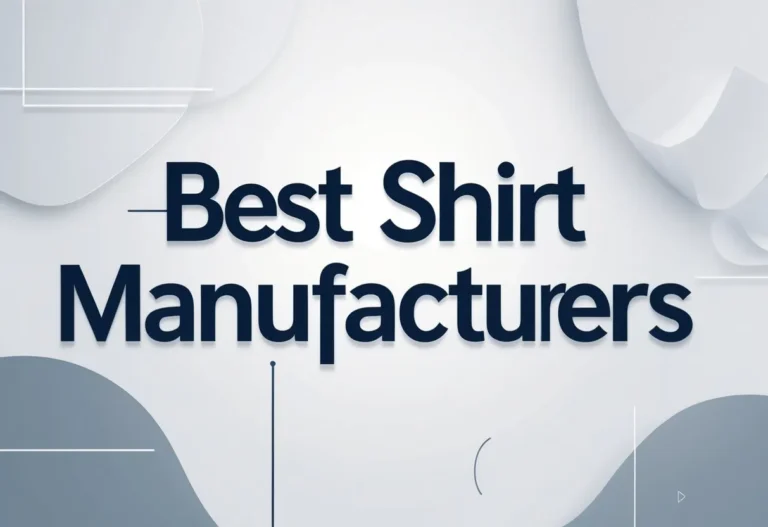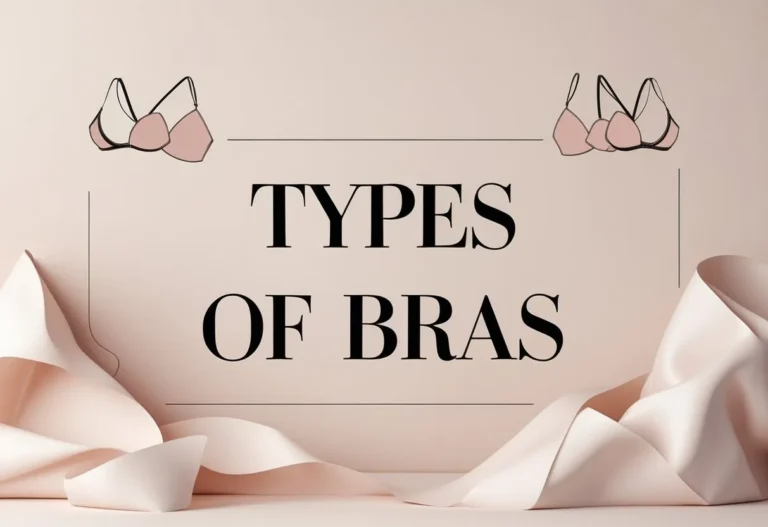How to Start a Private Label Clothing Line from Scratch
Do you know how to start a Private label clothing line from scratch can be a smart way to build a fashion brand without handling every part of production. By working with a manufacturer that makes clothes for you, entrepreneurs gain control over the design, quality, pricing, and branding. The key to success is choosing a clear niche, creating a strong brand identity, and partnering with a reliable manufacturer to bring ideas to life efficiently.

This approach lets new brands enter the market faster and with lower upfront costs compared to creating everything in-house. It is important to research the target audience and competitors to design products that meet customer needs. Once designs are ready, sampling and quality checks ensure the final product matches expectations before a full launch.
Launching a private label brand also requires careful planning for pricing, inventory, and marketing. Building an online presence and choosing the right sales channels helps generate visibility and customer trust. With steady growth and attention to feedback, a private label clothing business can develop strong credibility and lasting success.
Key Takeaways
- Identifying a focused market and strong brand helps ensure product relevance.
- Partnering with experienced manufacturers reduces risks and speeds up production.
- Effective pricing, marketing, and sales strategies support business growth.
Defining Your Niche and Target Market

Before launching a private label clothing line, it is crucial to pinpoint a clear focus. This involves selecting a specific market segment, understanding the customers in that segment, and knowing who the competitors are. These steps guide brand decisions and improve chances of success.
Choosing a Profitable Niche
A profitable niche targets a smaller, well-defined section of the clothing industry where customer demand is high but competition is manageable. Using tools like Google Trends can help identify rising interests in areas such as sustainable fashion, activewear, or streetwear.
Focusing on a niche allows the brand to speak directly to customer needs, leading to stronger loyalty and higher sales. Instead of trying to serve everyone, the business should aim to solve specific problems or fulfill unique desires within the chosen niche. For example, a line specializing in durable outdoor jackets for hikers will attract a clear, loyal audience.
Understanding Your Ideal Customer
Knowing the ideal customer means understanding their habits, preferences, and values. This includes details such as age, style preferences, shopping habits, and what problems they face with current clothing options.
Customer loyalty often grows when a brand connects on values, like sustainability or local production. Creating a detailed customer profile helps the brand design products and marketing that appeal directly to this group. Brands should avoid feedback from people outside the target market as it can be misleading.
Analyzing Competitors
Market research should include a close examination of competitors. This means looking at their product range, pricing, marketing tactics, and customer reviews. Understanding what competitors do well and where they fall short helps find gaps in the market.
A SWOT analysis (Strengths, Weaknesses, Opportunities, Threats) is useful here. Differentiation is key: being different in design, messaging, or values often beats simply being better. Competitor analysis helps a brand position itself uniquely to attract customers who feel underserved by existing options.
Crafting Your Brand Identity

Creating a strong brand identity involves key choices that shape how customers see and connect with your clothing line. It includes deciding on a memorable name, defining clear values that guide decisions, and designing visual elements that make your brand recognizable and trustworthy.
Selecting a Brand Name
A brand name needs to be simple, memorable, and relevant to the niche. It should reflect the style and values of the clothing line without being too vague or too specific.
The name must be unique enough to avoid confusion with existing brands. Checking domain availability and social media handles is crucial for a consistent online presence.
Short names or combinations of meaningful words often work best. Avoid complex spellings or words that might be hard to pronounce. The name should resonate with the target audience and be easy to recall.
Developing Core Brand Values
Brand values are the principles that guide every business decision. Clear values help build trust and loyalty among customers, setting the tone for product quality, customer service, and marketing.
Values might focus on sustainability, affordability, durability, or style innovation. For example, a brand can emphasize eco-friendly fabrics and zero-waste packaging.
Listing 3-5 core values keeps the focus sharp. These values influence everything—from fabric choices to how labels and hang tags are designed and printed.
Designing Visual Identity
Visual identity includes the logo, color palette, typography, packaging, and tags. These components work together to create a consistent look that represents the brand’s personality.
Colors should match the brand values; for example, earth tones suit sustainable brands while bold colors fit streetwear labels.
A clean, professional logo is necessary for recognition on labels and hang tags. Packaging should reinforce the brand message, using materials that support the core values.
Consistency across your website, social media, and product presentation strengthens customer recall and confidence.
Building a Business Foundation

Starting a private label clothing line requires careful preparation. This includes planning finances, setting goals, and following legal rules to protect the brand and comply with labeling laws. Laying this groundwork helps create a clear path forward.
Creating a Business Plan
A business plan acts as a roadmap for a private label brand. It outlines key details like product types, pricing, costs, and target customers. For a fashion startup, it should include sustainable sourcing goals, expected production timelines, and sales channels.
The plan should cover:
- Product range and retail prices
- Cost breakdown: fabric, labor, shipping
- Supplier relationships and minimum order quantities
- Marketing and sales strategy
- Financial forecasts including margins and cash flow
- Risk management for delays or supply issues
A concise, clear plan helps secure suppliers and manage cash flow. It also guides decision-making throughout development and launch.
Understanding Legal & Labeling Requirements
Legal compliance is crucial for private label clothing lines. Labels must meet laws that differ by country but generally require clear information about fiber content, care instructions, country of origin, and size.
Key points include:
- Adhering to fiber content accuracy (e.g., percentages of cotton or hemp)
- Including care labels with washing and drying instructions
- Stating the manufacturing country
- Following trademark rules to protect brand identity
- Registering the business and obtaining necessary permits
Failing to meet labeling laws can lead to fines or product recalls. Clear labeling builds trust with customers and aligns with brand values, especially for eco-conscious startups.
Designing Your Private Label Clothing Line

Designing a private label clothing line requires careful choices about styles and materials. Clear decisions here help shape the brand’s identity and the quality customers will expect. The focus should be on creating a consistent range that fits the target market and selecting fabrics that support the brand’s values.
Planning Product Range and Styles
When planning the product range, it’s crucial to define a clear niche. The clothing brand should focus on a few key styles, like hoodies, tees, or work shirts, rather than trying to cover every category at once. This helps maintain consistency and manage production costs.
Designs should reflect who the target customer is. For example, a private label clothing line aimed at eco-conscious buyers might include simple, classic cuts with sustainable features. Styles can be seasonal or evergreen, but each must align with the brand’s purpose, such as casual weekend wear or premium office clothes.
Starting with fewer SKUs reduces risk and simplifies manufacturing. Making samples early and testing designs ensures the clothes meet expectations. Consistent sizing and fit will help build a loyal customer base.
Choosing Materials and Fabrics
Fabric choice is central to quality and brand identity. Organic cotton is a popular option for private label clothing brands focused on sustainability. It offers breathability and softness, which appeal to many consumers.
Bamboo and recycled polyester are also strong choices. Bamboo provides moisture-wicking and a smooth feel, good for activewear or lounge clothes. Recycled polyester supports eco-values and adds durability, especially for items like hoodies or outerwear.
It’s important to test fabric samples before bulk ordering. Tests should check shrinkage, colorfastness, and texture after washing. Sustainable fabrics often cost more and may have longer lead times, so clear communication with manufacturers is necessary.
Customizing trims, labels, and tags with eco-friendly materials adds another layer of brand consistency without exceeding budgets. This care in fabric and detailing helps a private label clothing line stand out in a crowded market.
Product Development and Tech Packs

Developing a private label clothing line depends on clear product details and smart choices in materials and presentation. Precise instructions help manufacturers produce exact designs, while thoughtful selection of trims and packaging ensures brand consistency and customer appeal.
Creating Detailed Tech Packs
Tech packs act as the blueprint for each clothing item. They include exact measurements, fabric types, stitching methods, and color codes. These details reduce errors during production and save time by avoiding repeated questions from manufacturers.
A typical tech pack consists of:
- Flat sketches showing front and back views
- Material and fabric specifications with exact codes
- Sizing charts with precise measurements
- Construction details on seams and stitching
- Label and hang tag placement instructions
The clearer the tech pack, the smoother the product development process. It signals professionalism and helps manufacturers understand the designer’s vision without confusion.
Selecting Trims and Packaging
Trims and packaging shape the product’s look and customer experience. Trims include buttons, zippers, labels, and hang tags. Choosing quality trims that fit the style and function of the clothing is key.
Packaging should protect while reinforcing brand identity. This can include branded tissue paper, boxes, or bags. Simple but effective packaging can raise the perceived value of the product.
When selecting packaging and trims, factors to consider are:
- Durability and protection during shipping
- Clear display of brand logos or messages
- Cost-effectiveness to keep budgets on track
These choices contribute to a professional final product that meets customers’ expectations.
Sourcing and Manufacturing

Sourcing and manufacturing require careful choices about partners and quality control. Finding a reliable manufacturer with reasonable minimum order quantities (MOQs) is essential. Once a manufacturer is chosen, ordering samples and making revisions ensure the final product meets brand standards and customer expectations.
Finding the Right Manufacturer
Choosing the right clothing manufacturer is critical for private label fashion success. The manufacturer should offer flexibility in MOQs so early-stage businesses can start small without large upfront costs. Platforms like Sewport help connect brands with verified manufacturers that match specific needs.
Manufacturers should provide clear communication, quality fabrics, and customization options. It’s important to ask about production timelines, quality control processes, and whether they offer third-party QC inspectors to ensure consistent standards. Working with a manufacturer experienced in private label fashion allows smoother development and quicker market entry.
Ordering Samples and Revisions
The sample stage is crucial to test design, fit, fabric, and construction. Brands should request multiple rounds of samples to address any issues before bulk production. This process saves money by avoiding costly mistakes later.
Samples reveal how the design looks in real life and help verify adherence to brand quality. Brands should provide detailed feedback to manufacturers for revisions. Involving a third-party quality control inspector at this stage can catch problems the brand or manufacturer might miss, ensuring the final products meet expectations.
Managing Production, Quality Control, and Costs

Balancing production expenses with product quality is essential for a successful private label clothing line. Controlling costs involves careful negotiation of pricing and order quantities, while maintaining quality requires strict monitoring throughout manufacturing. Effective management in these areas reduces risks and keeps the brand’s reputation intact.
Negotiating Pricing and MOQs
Negotiating pricing starts with a clear understanding of production costs such as materials, labor, and shipping. Manufacturers often set a minimum order quantity (MOQ) to cover their fixed costs. Buyers should ask for detailed quotes that break down unit costs and any extra fees.
It is important to compare MOQs from different suppliers to find a balance between manageable inventory and pricing advantages. Smaller MOQs may cost slightly more per unit but reduce upfront investment and leftover stock. Negotiating long-term deals or committing to repeated orders can also lead to better pricing.
When discussing pricing, include all potential costs like packaging, labeling, and shipping. Shipping terms such as Delivered Duty Paid (DDP) ensure all duties and taxes are covered upfront, avoiding surprise expenses later.
Ensuring Quality Control
Quality control safeguards the clothing line’s standards from production to delivery. Brands should implement inspections at several stages: raw material receipt, in-line production, and final pre-shipment.
Using a third-party quality control inspector adds an objective layer of oversight. These inspectors follow Acceptable Quality Limit (AQL) standards to sample garments and check for defects in stitching, fabric, color, and measurements.
Clear communication of quality expectations through detailed tech packs and samples is necessary. The final approval sample (pre-production sample) serves as the baseline for all manufacturing runs.
Regular QC reports with photos and notes help identify issues early, allowing timely corrections and reducing costly delays or returns. A strong quality process builds customer trust and protects the brand’s value.
Setting Up Sales Channels and Online Store

Selecting the right sales channels and creating a functional online store are essential for reaching customers and generating sales. Decisions about platforms and store design impact how easily customers find products and how smoothly they can buy them.
Choosing an E-Commerce Platform
Choosing an e-commerce platform depends on the brand’s size, budget, and sales goals. Shopify is popular for its ease of use, built-in marketing tools, and secure payment options. It supports quick setup and scalable growth, making it suitable for new brands.
WooCommerce is a flexible, open-source option for those familiar with WordPress. It offers full control over customization but requires more technical knowledge to manage hosting and security.
Marketplace channels like Amazon and Etsy provide access to large, ready-made audiences but limit branding control. Brands that want direct customer relationships often prefer their own online store alongside these platforms.
Building Your Online Store
Building an online store starts with a clear layout that highlights the product range and key features. Clear navigation menus, fast loading speeds, and mobile optimization improve the shopping experience.
Integrating payment methods like credit cards, PayPal, or Apple Pay is important for convenience and trust. Adding detailed product descriptions with size guides and high-quality images helps reduce returns.
Brands should also set up analytics tools to track visitor behavior and sales patterns. Including customer reviews and FAQs supports buyer confidence and reduces support questions.
Launching and Growing Your Private Label Brand

Starting a private label clothing line requires a strong focus on brand visibility and sales momentum. Success depends on clear marketing plans and finding ways to fund production while building customer trust early on.
Marketing Strategy and Brand Promotion
A solid marketing strategy targets specific customers through clear messaging and consistent visuals. For a fashion brand, this means defining a unique story and style that matches the niche.
Key marketing tactics include:
- Building a website and social media pages with brand-consistent design
- Running ads on platforms like Instagram and Facebook aimed at the target audience
- Collaborating with influencers who fit the brand’s image
- Creating email campaigns that notify customers about launches, sales, and updates
Using tools to track sales and customer behavior helps adjust campaigns for better results. Keeping the message focused on product benefits and brand values builds loyalty and encourages repeat business.
Leveraging Crowdfunding and Early Sales
Crowdfunding platforms can be essential for raising funds and validating demand before large production runs. Campaigns serve as both promotion and market testing.
To use crowdfunding effectively, brands should:
- Prepare clear, engaging product descriptions and visuals showing quality
- Set realistic funding goals based on production costs and marketing expenses
- Offer rewards like early-bird pricing or exclusive designs
- Communicate regularly with backers, providing updates and responding to feedback
Early sales through crowdfunding reduce financial risk and create a community around the brand. This early momentum makes it easier to attract retailers and scale production with proven demand.
Frequently Asked Questions
What are the initial steps to take when starting a private label clothing line?
They should first research the target market and identify a specific niche. Next, defining the brand identity and creating a solid business plan are crucial. These steps help set a clear direction before moving into design and production.
What strategies are effective for starting a clothing line from home?
Starting small is important, using print-on-demand or small batch production to reduce costs. Building an online presence through social media and a simple e-commerce site helps reach customers without heavy investment in physical stores.
How can I source materials for my private label clothing line when working with a tight budget?
Choosing manufacturers with low minimum order quantities allows for smaller runs. Attending trade shows or using online directories can help find affordable suppliers. Print-on-demand services are another option to avoid upfront inventory costs.
What legal considerations should I be aware of when launching a private label clothing line?
Registering the business and trademarking the brand name protects the company legally. It is also essential to understand contracts with manufacturers and sellers. Ensuring compliance with product safety and labeling laws avoids future penalties.
Can you outline the process of creating a brand identity for a new clothing line?
They should develop a clear brand story that connects with the target audience. Designing logos, choosing colors, and setting a consistent tone for all marketing materials creates a cohesive image. This identity must reflect the values and style of the clothing line.
What are the best online platforms to sell a private label clothing line for beginners?
Popular options include Shopify for building dedicated stores, Etsy for handmade and niche products, and Amazon for wide reach. Social media marketplaces and platforms like eBay can also provide diverse selling opportunities with minimal startup costs.







